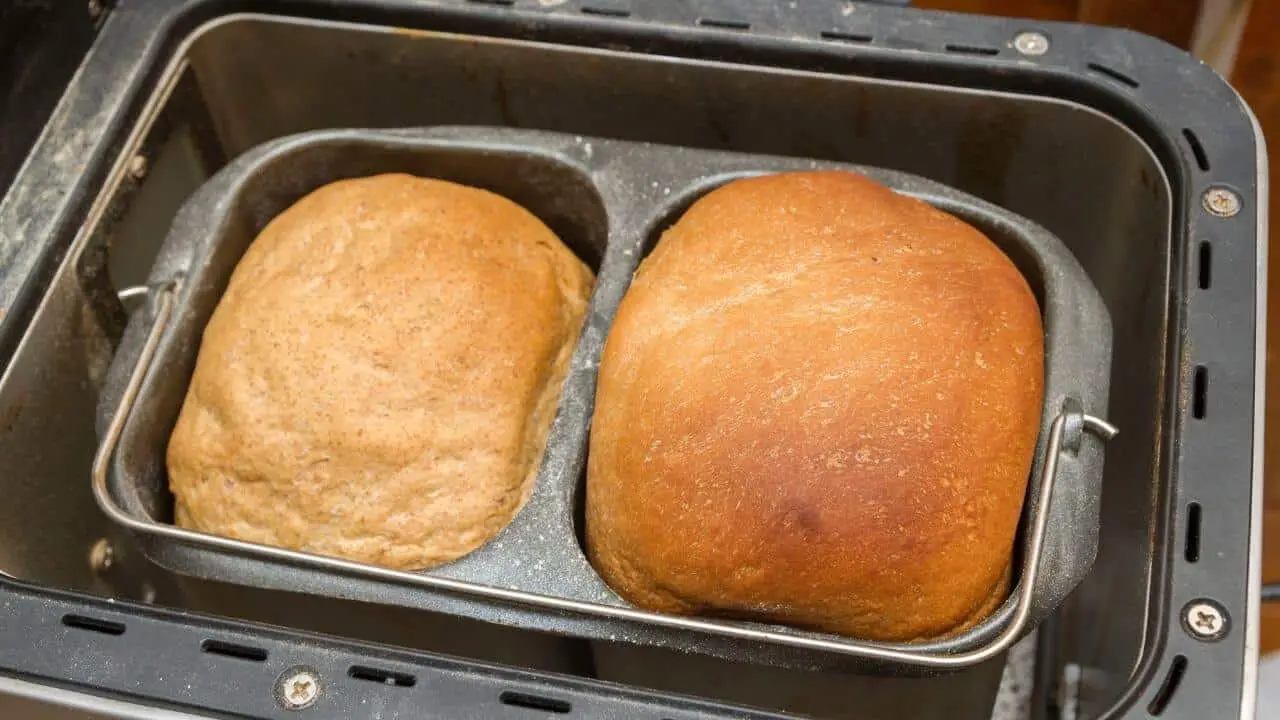Although baking bread is considered an art, as well as a science, then using a breadmaker is supposed to be a relatively straightforward endeavor, especially if you have taken a few minutes to read the user manual.
Sometimes, however, when you try out a new bread machine or a recipe, little adjustments and some trial and error are needed to bake that perfect loaf.
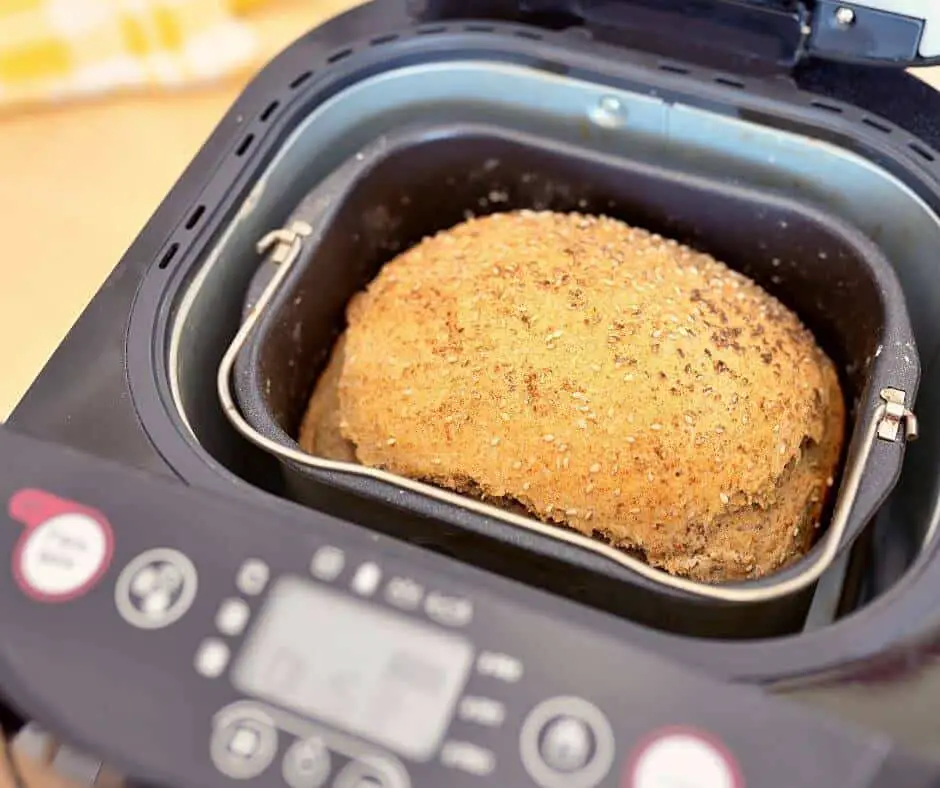
You see, not all breadmakers are created equal. Some bread makers cost a lot more than others, and each appliance has a series of functions, programs, and settings that are programmed slightly differently. Besides, your breadmaker may come with custom-made recipes that are made specifically for that particular appliance.
Suppose you have always made bread by hand, or you’ve had a different breadmaker before. In that case, you probably need to make a few adjustments to the recipe.
So, if you’re wondering why your bread came out shaped like a mushroom or the reasons behind an unrisen loaf, look no further.
There are some common issues that present themselves alongside using a breadmaker, and I’m here to help you troubleshoot some of the most common problems and what you can do to fix them on your next rye run-around.
Bread Machine Basics
Before we get into the specifics of bread machine troubleshooting, let’s make sure we have got the basics right first, as these can fix most of the problems you may encounter.
At this point, I am assuming that you have already read the bread machine user manual. After that, many of the problems you encounter can be fixed just by checking your dough during the kneading cycle.
This simple action gives you the opportunity to make adjustments and prevent problems before they even happen.
What To Look For When Checking The Dough?
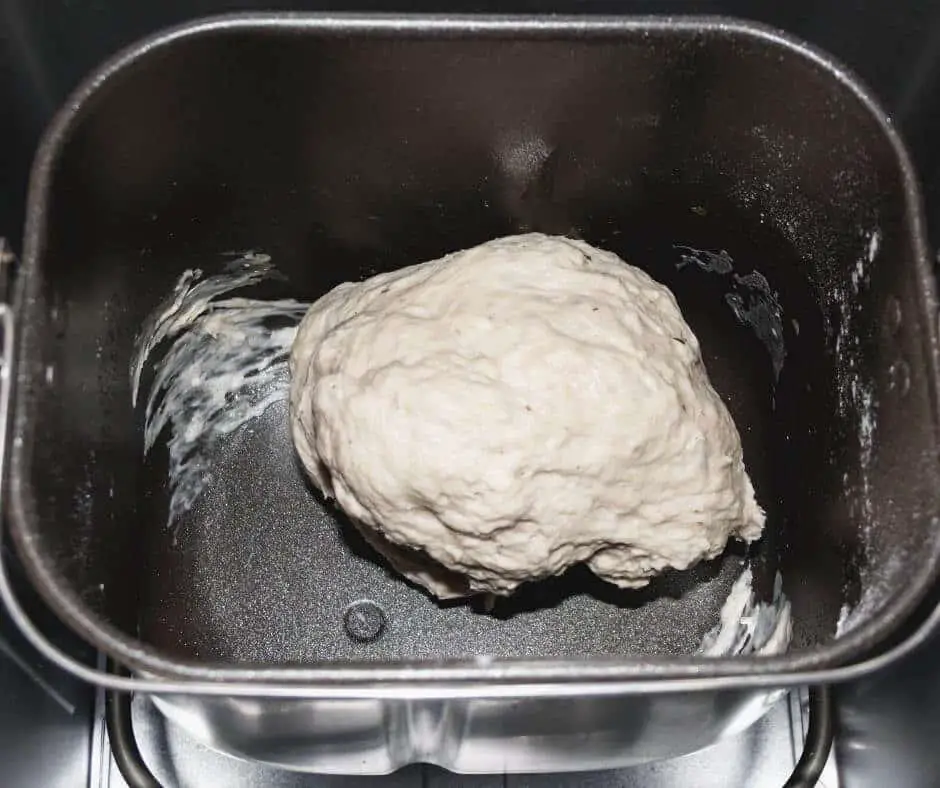
When your bread maker is kneading, your dough should form a nice ball. If the mixture cannot hold itself together, leaving dough trailing or sticking, you will likely need to add flour.
If the ball of dough looks dry, flaky, or crumbly, and there is flour that hasn’t been absorbed, you might need to add a bit of liquid. Just add a tiny bit; a teaspoonful will be enough in most cases or until you achieve the right consistency.
Choose The Right Yeast
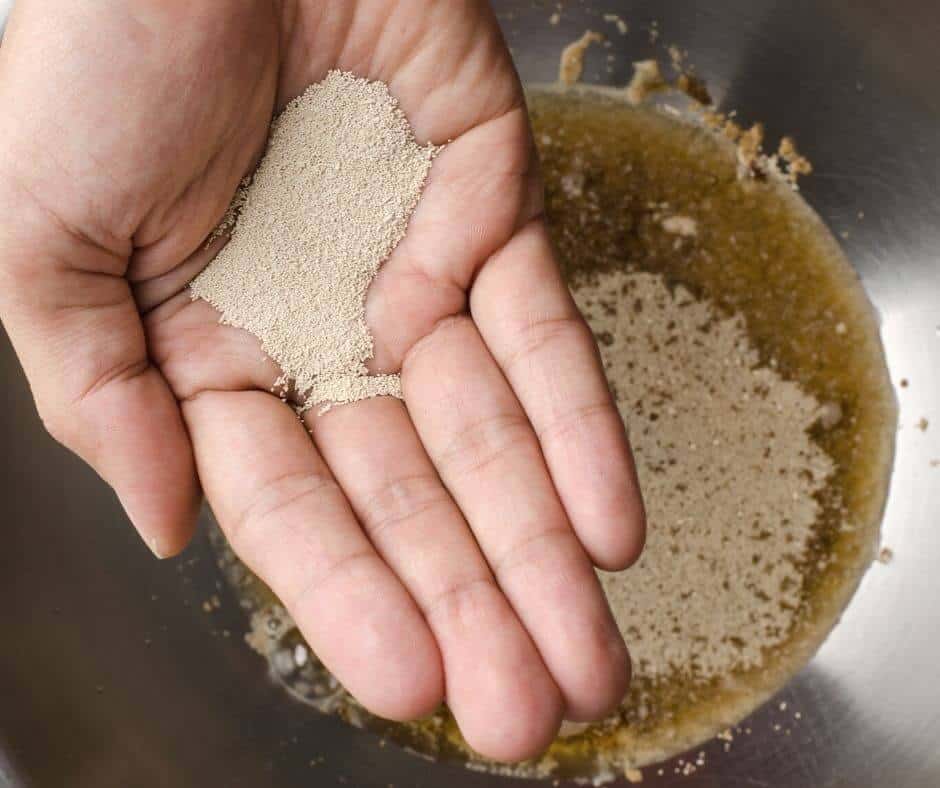
Yeast is the most important ingredient for bread baking, so it’s necessary to ensure that your yeast is live, properly stored, and maintained. Old yeast will not give you the same result as fresh yeast.
Additionally, ensure that your yeast is compatible with your bread recipe before buying.
Because the right yeast is such an important factor when it comes to baking bread, I have written a detailed article about this topic here: What Yeast to Use in Your Bread Machine? (These Are The Best Options)
Do You Have The Ideal Flour?
Although all-purpose flour will be ok for most recipes, it’s best to use bread flour as it is specific to the needs of bread.
Bread flour contains more gluten (be careful of any allergies) and helps the loaf rise and hold its shape. Dark rye flour and/or whole wheat flour are fine as well but will not give you the same consistency as that of bread flour.
All of your ingredients should be at room temperature before being placed into the bread pan. If you’re using excessively cold ingredients, it will have a negative effect on the way your loaf rises. Liquids that are too hot will cause your yeast to die and leave you with an unrisen loaf.
Bread Machine Troubleshooting And Solutions
You may feel that you’ve tried absolutely everything to keep that loaf from collapsing during baking or avoid a doughy texture, and you very well may have! Nonetheless, there is always a reason for bread-baking issues. No matter the problem, we can troubleshoot the bread-making process. Soon enough, you’ll be spreading butter on the loaf of your dreams.
Dough Problems
1. Dough Won’t Rise
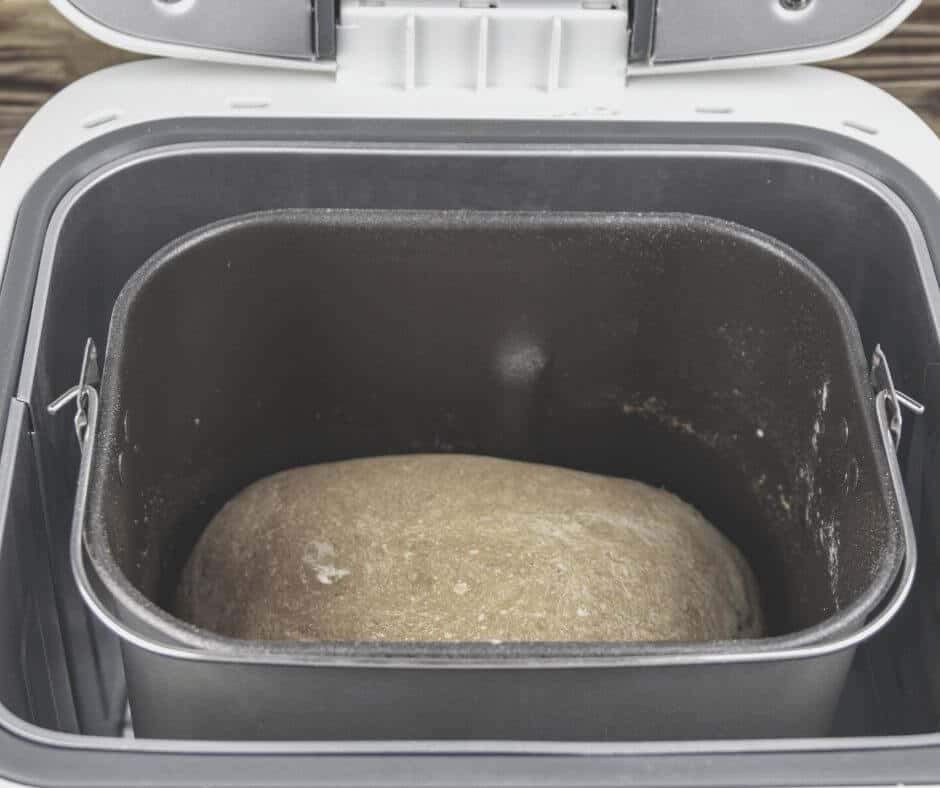
The dough needs to rise to give you that beautiful bread with a lovely shape and texture. However, sometimes dough can be finicky. There is more than one likely reason behind your dough’s unwillingness to rise—like me in the mornings—and it’s more reasonable than a mere lack of motivation.
Here are a few common mistakes that can discourage a rise in your dough:
- The yeast was old or was improperly stored.
- You forgot to include the yeast in your mix.
- Other key ingredients were misused or forgotten.
- Ingredients were added to the machine incorrectly.
- Yeast was killed due to high water temperature, too much sugar, or too much salt.
The typical issue behind unrisen dough tends to involve dead and ineffective yeast. Make sure you store your year’s property to keep it fresh and alive longer.
Also, be careful to use room temperature water and the proper amount of salt and sugar to ensure that your yeast will thrive and encourage rising.
What People Are Saying?
Here are some questions and solutions that people have about dough not rising properly: Help – Bread Suddenly Not Rising – Mumsnet Forum
2. Dough Won’t Mix Or Knead Properly

Firstly, make sure you have not forgotten to put the mixing paddles in (this has happened to me many times).
If the mixing paddles are in and you’ve found that your machine is not mixing your dough properly once you’ve hit the start button, there could easily be a problem with the bread maker itself. Ensure that you’ve checked at the bottom of the pan for a securely attached paddle and that the motor works correctly when you turn it on.
Also, the problem could be caused by too much flour, or there is a pocket of unmixed flour that got caught in the blade to prevent it from mixing around. In this case, adding a bit of liquid will usually resolve the issue.
Discussions
Here is a support forum discussion about this topic: My bread machine isn’t mixing the ingredients like it is supposed to? – Diynot Threads
Shape Problems
3. Loaf Came Out Too Small
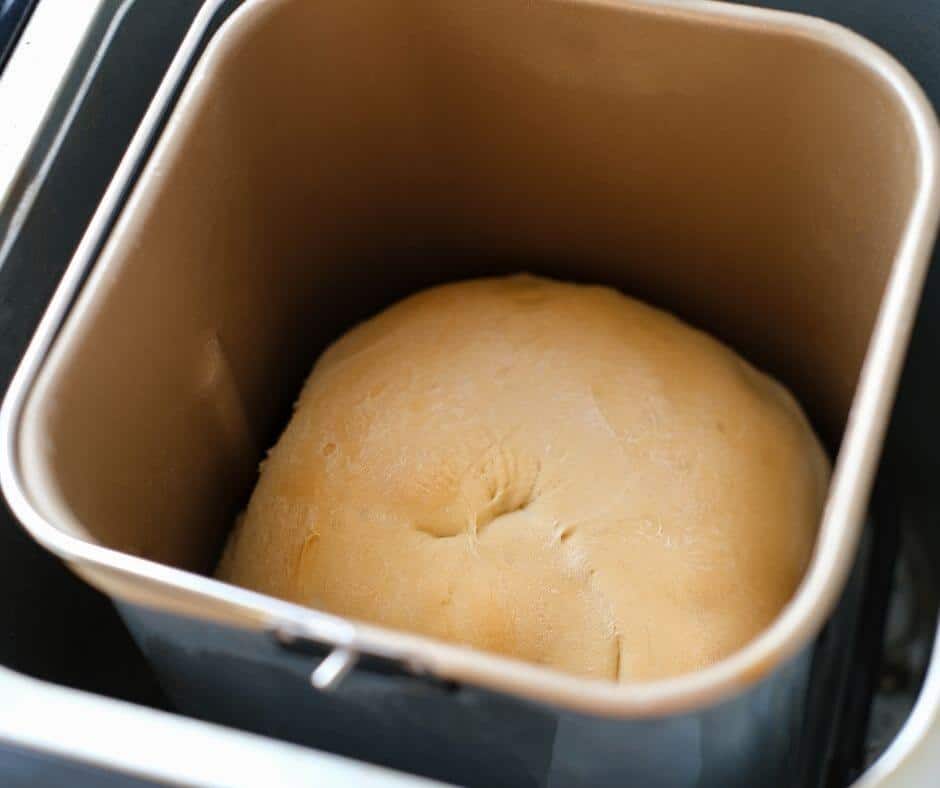
A small loaf is always disappointing. More bread is certainly better, of course. Suppose your bread is consistently coming out of the machine as a miniature version of what you were hoping for. In that case, there could be a few definite culprits.
- Too little sugar was used.
- Yeast was improperly stored or old.
- Ingredients were placed in the machine in a way that caused the yeast to have contact with the salt for too long.
- The pan was too large for the loaf size or the quantity of dough, and there was not enough dough to fill the pan.
Additionally, keep in mind that shorter and heavier loaves are frequent–and normal–when using whole-grain or all-purpose flour rather than bread flour.
Discussions
Here are some tips and fixes that people online have to offer: Is bread in the breadmaker not rising properly? – Forums Moneysavingexpert
4. Loaf Is Shaped Like A Mushroom
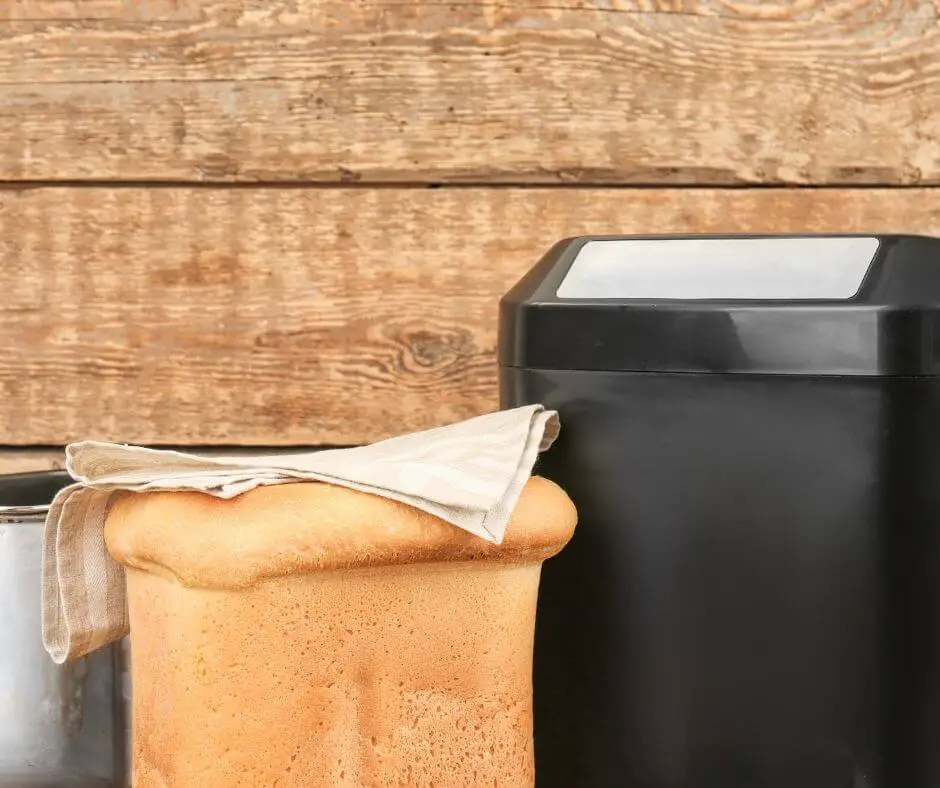
Mushrooms are great when they’re just that: mushrooms. However, when a bread loaf pops out shaped like a pyrocumulus mushroom cloud, it is not that appealing.
Not to worry, this is a fairly common problem when it comes to bread making. That said, it’s been troubleshot before.
Mushroom-shaped loaves typically indicate a disproportion in ingredients (e.g., too much yeast, sugar, flour, etc., was used). But if you find that your loaf still has issues after measuring your ingredients accurately, it could be due to another problem.
Here are a few common mistakes that can cause a mushroom-shaped loaf:
- Ingredients were used out of proportion.
- An incorrect amount of salt was used—too much or too little.
- Ingredients were not adjusted when adding sugary ingredients.
- Your pan wasn’t large enough for the amount of dough.
- The wrong kneading cycle was selected and caused an undesired consistency.
5. Loaf Has Collapsed Or Sank In The Middle
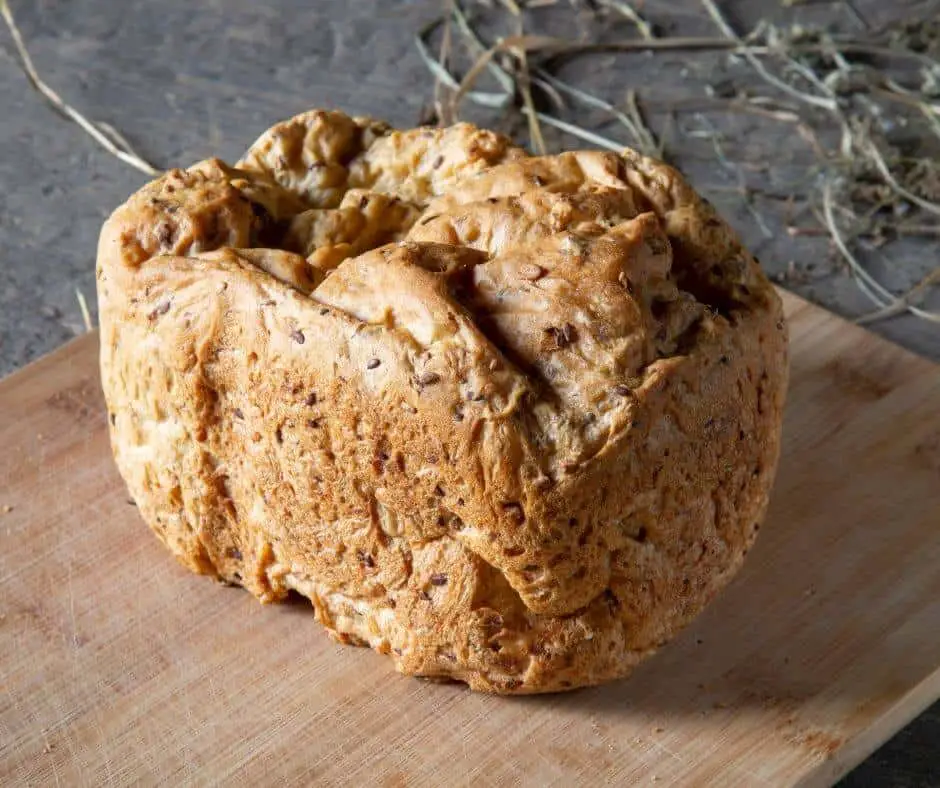
If your bread has collapsed while baking, you likely understand the frustration it causes. A collapsed loaf is a common bread-making issue. Collapsed bread is similar to a mushroom-shaped loaf, only could have slightly different causes.
Here are some of the top reasons why your loaf may be collapsed:
- Too little salt was used, or salt was forgotten.
- Too much yeast was used.
- Undesired consistency during the kneading cycle.
- The dough rose to the top of the machine and interfered with the baking cycle.
- The machine was opened during the baking cycle.
- Ingredients were disproportioned.
- Too much liquid was added (flour and liquid ratio should be exact).
A collapsed loaf could also be due to hot weather—if it is overly warm or humid, your dough could rise too fast and collapse before baking begins.
Try to bake your loaf at the coolest time of day or use refrigerated liquids. You could also try the rapid cycle on your bread machine if possible. As I said, it is often trial and error to pinpoint the problem.
Discussions
Here are some tips and solutions from other bread machine users: Why does the dough in my bread machine collapse just after cooking starts? – Cooking StackExchange
Texture Problems
6. Bread Has a Gummy And Sticky Texture
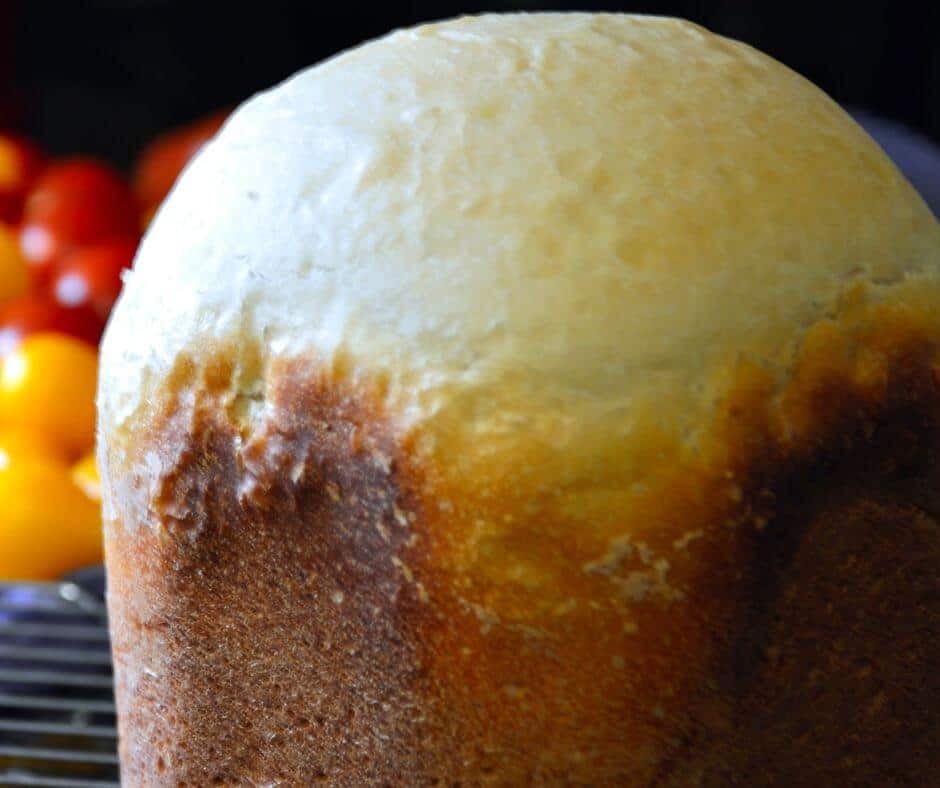
Cutting into a seemingly perfect loaf only to be left with a sticky, gummy mess inside makes for quite an unfortunate find. Doughy bread is caused by underbaking, which is a common issue.
Here are some tips to fix unevenly baked loaf:
- You may have used the wrong setting on your machine—shorter durations may not be enough for the amount of dough you’ve used.
- Too many or too much-wet ingredients (e.g., applesauce, eggs, fat, etc.) were added.
- Too much sugar was used.
- The room that the bread was baked in was excessively cold.
If you find that this is a consistent problem, it could be due to a defective bread machine or thermostat.
Also, ensure that the pan you’re baking the bread in is large enough to let heat infiltrate into the center of the loaf.
Discussions
Check out this discussion thread here: My bread texture is spongy and gummy.. any fixes? – Thefreshloaf Forum
7. Loaf Is Dense And Heavy
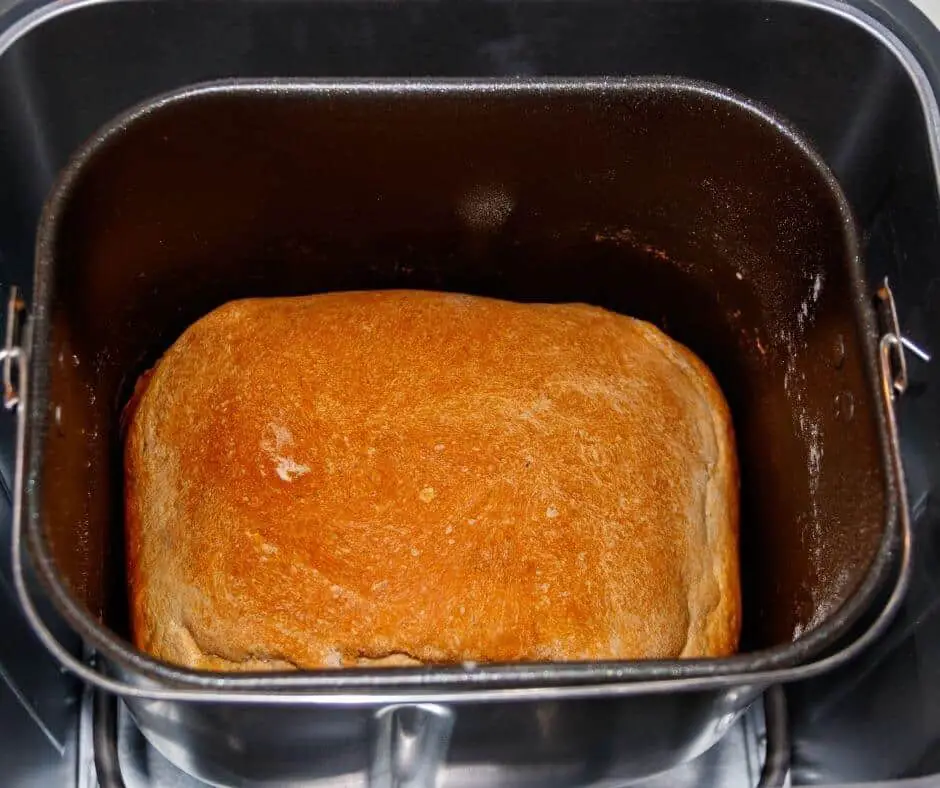
While dense loaves can still be tasty, they may not have the desired consistency that you were hoping to find.
Dense loaves are common when using all-purpose or whole-grain flour, and this could be the issue. You can swap these or substitute half for bread flour.
Nonetheless, suppose your bread is coming out of the breadmaker super heavy and dense while you’re already using bread flour. In that case, there could be other underlying issues.
Here is a list of common mistakes that lead to density:
- Too little water was used.
- Not enough sugar was added.
- Too little yeast was used.
- Too much flour was added.
- Salt was forgotten or misused.
- Too many dried fruits or other additional ingredients were used.
Appliance Support
Check out the Panasonic appliance support page here: Why Is My Breadmaker Bread So Dense And Heavy? – Panasonic Home Appliances
8. Loaf As Large Air Bubbles Or Air Pockets
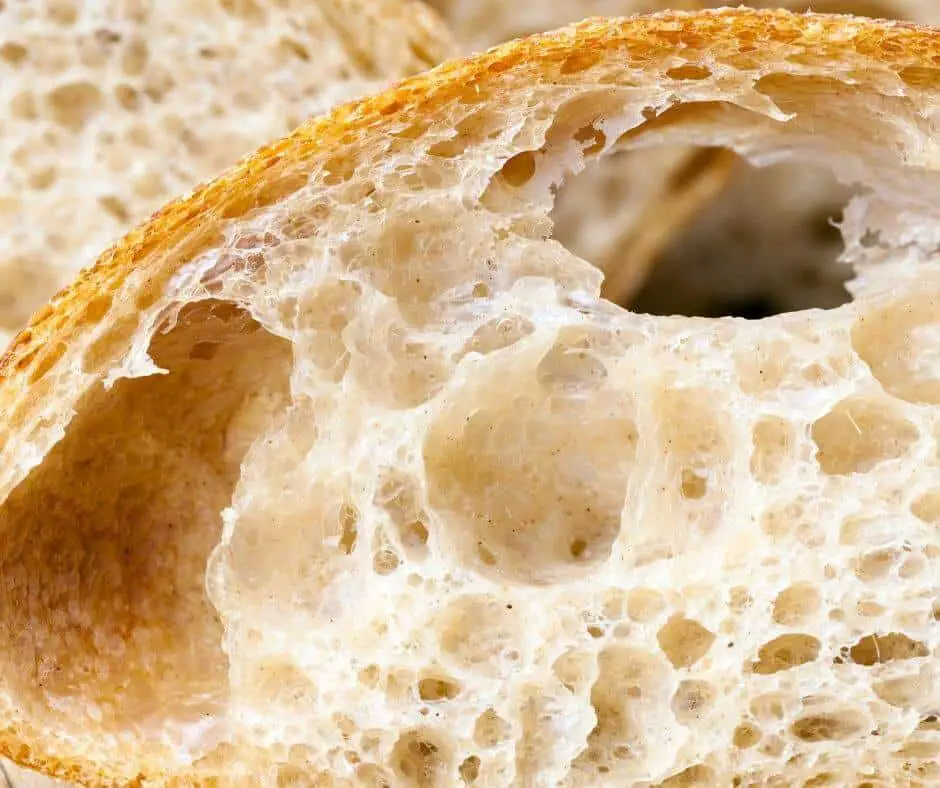
Air pockets are typically a sought-after trait of freshly baked bread. That said, too many or too big holes cause a coarse texture. Not to mention, it’s no fun to find that your bread looks like Swiss cheese.
There are a few causes for this as follows:
- An excess amount of water was used.
- The salt was forgotten, or too little was added.
- Too much yeast was used.
- The dough was not appropriately kneaded.
- Addition of dried fruit that was too wet or was not drained beforehand.
A coarse loaf can also be caused by heat. If you’re located in an area where the weather is overly warm or humid, the rise can easily be accelerated. The yeast action can also become too enthusiastic if you have used ingredients that were too warm, to begin with.
Here Is What People Has To Say
Check out this Quora discussion here: How can I keep large air pockets from forming in my homemade loaf? – Quora Discussions
Crust Problems
9. Crust Is Burned Or Extremely Dark
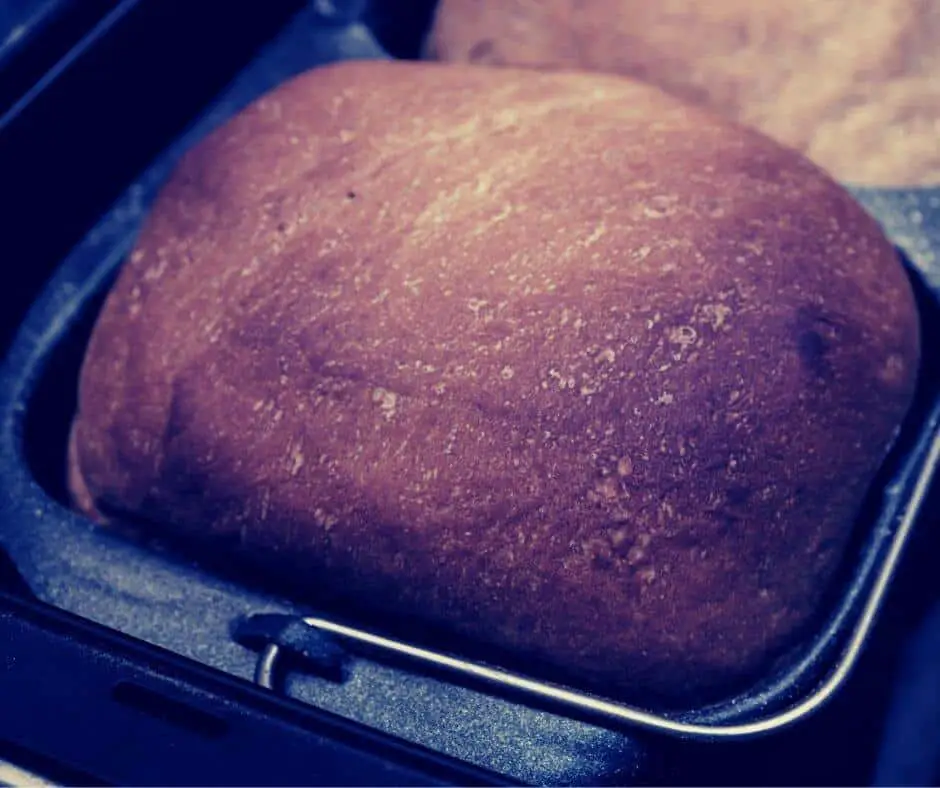
The burned crust is not an appealing characteristic of a loaf but is all too common in the bread-making world.
The dark crust can be due to the machine settings and the wrong baking cycle, causing the crust to burn. If you are consistently finding that your crust is super dark, change the machine setting from dark to light crust.
If your bread maker doesn’t have a light crust setting, ensure that you remove the loaf a couple of minutes before the baking process is complete.
A darker crust can also be caused by too much sugar—be sure to follow the recipe as directed.
Here Is What People Has To Say
Here are another discussion and possible solutions that could help: The bread maker keeps burning the loaf! – Moneysavingexpert Forum
Other Tips For Using A Bread Maker
A bread machine is supposed to make things super easy for us—all we need to do is add the ingredients and let it do its thing. Nonetheless, however good is your appliance, if we give it the wrong ingredients or in the wrong order, there is only so much it can do. Always be sure to follow your recipe and bread maker manual as the manufacturer recommends.
Here are a few things to look out for that will aid in the process:
- The pan is removable. This makes it easy to remove from the machine and weigh your ingredients if needed to ensure that you don’t make too much dough for the size.
- Always avoid opening the machine before the baking process is complete. This can cause your loaf to collapse!
- Immediately remove the bread pan from the machine when done baking. It will be hot, so use an oven mitt or a towel to handle the pan.
Happy Baking!
Making your own bread doesn’t always have to be difficult, and a bread machine makes the task extremely simple. However, problems are just as likely to arise, so ensure that you’re following all of these tips to keep your bread moist, crispy, and as lovely as you. Make a note of the adjustments that you make, so it is easier to troubleshoot problems next time.
Best of luck on your bread-baking journey!
Related Post: 7 Must-Read Bread-Making Blogs (For Useful Tips And Best Recipes)
